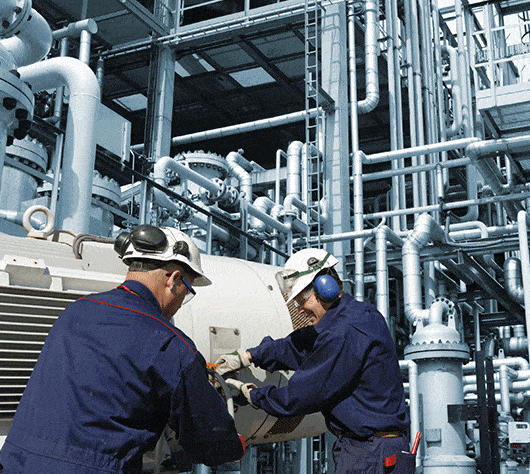All About Roar Solutions
All About Roar Solutions
Blog Article
The Greatest Guide To Roar Solutions
Table of ContentsSome Of Roar SolutionsHow Roar Solutions can Save You Time, Stress, and Money.Indicators on Roar Solutions You Need To Know
In order to secure installations from a prospective explosion a method of analysing and classifying a possibly harmful location is needed. The purpose of this is to make sure the correct option and setup of equipment to inevitably protect against a surge and to make certain safety of life.
(https://www.magcloud.com/user/roarsolutions)
No tools should be set up where the surface temperature level of the tools is higher than the ignition temperature of the provided danger. Below are some common dust hazardous and their minimum ignition temperature. Coal Dirt 380C 225C Polythene 420C (thaws) Methyl Cellulose 420C 320C Starch 460C 435C Flour 490C 340C Sugar 490C 460C Grain Dirt 510C 300C Phenolic Resin 530C > 450C Aluminium 590C > 450C PVC 700C > 450C Residue 810C 570C The probability of the hazard being present in a focus high adequate to trigger an ignition will vary from location to place.
In order to identify this danger an installment is divided into locations of risk relying on the quantity of time the hazardous is existing. These locations are referred to as Areas. For gases and vapours and dusts and fibers there are 3 areas. Area 0 Area 20 A hazardous environment is highly likely to be existing and might exist for extended periods of time (> 1000 hours each year) or also continuously Zone 1 Zone 21 A harmful ambience is feasible yet unlikely to be existing for extended periods of time (> 10 450 C [842 F] A category of T6 implies the minimal ignition temperature is > 85 C [185 F] Harmful area electrical tools perhaps created for usage in higher ambient temperatures. This would indicated on the rating plate e.g. EExe II C T3 Ta + 60C( This suggests at 60C ambient T3 will not be surpassed) T1 T1, T2, T3, T4, T5, T6 T2 T2, T3, T4, T5, T6 T3 T3, T4, T5, T6 T4 T4, T5, T6 T5 T5, T6 T6 T6 A T Course rating of T1 implies the optimum surface area temperature level produced by the tool at 40 C is 450 C. Presuming the connected T Course and Temperature rating for the equipment are appropriate for the area, you can always make use of an instrument with a more rigorous Division rating than required for the area. There isn't a clear response to this question. It actually does depend upon the sort of equipment and what repairs need to be performed. Tools with specific examination procedures that can't be performed in the field in order to achieve/maintain 3rd party rating. Must come back to the manufacturing facility if it is before the equipment's solution. Field Repair Service By Authorised Employee: Complicated testing might not be called for nonetheless certain procedures may require to be complied with in order for the equipment to preserve its 3rd event score. Authorised employees should be utilized to carry out the job correctly Repair must be a like for like substitute. New part have to be considered as a straight substitute needing no special screening of the equipment after the repair work is full. Each tool with an unsafe ranking must be assessed separately. These are outlined at a high level listed below, yet for even more thorough info, please refer directly to the guidelines.
Some Known Factual Statements About Roar Solutions
The tools register is an extensive data source of tools documents that consists of a minimum collection of fields to recognize each item's location, technical specifications, Ex-spouse classification, age, and ecological data. The proportion of Comprehensive to Shut inspections will be figured out by the Equipment Risk, which is analyzed based on ignition threat (the probability of a resource of ignition versus the probability of a combustible ambience )and the hazardous area classification
( Zone 0, 1, or 2). Carrying out a durable Risk-Based Evaluation( RBI )strategy is important for guaranteeing conformity and safety and security in managing Electrical Tools in Hazardous Areas( EEHA).
Roar Solutions Things To Know Before You Buy

In regards to explosive threat, a dangerous area is an atmosphere in which an explosive atmosphere is present (or might be anticipated to be existing) in amounts that need unique preventative measures for the building, installment and use devices. eeha training. In this article we discover the challenges faced in the office, the threat control measures, and the required competencies to work securely
It issues of modern life that we produce, keep or handle a variety of gases or fluids that are considered combustible, and a series of dusts that are considered combustible. These substances can, in certain problems, develop eruptive environments and these can have major and awful consequences. Most of us recognize with the fire triangular remove any kind of among the 3 aspects and the fire can not take place, yet what does this mean in the context of dangerous areas? When breaking this down into its most basic terms it is essentially: a mix of a certain amount of launch or leakage of a certain compound or material, blending with ambient oxygen, and the existence of a resource of ignition.
In the majority of instances, we can do little about the degrees of oxygen in the air, but we can have considerable impact on sources of ignition, for instance electric equipment. Harmful areas are documented on the hazardous location classification drawing and are determined on-site by the triangular "EX" sign. Below, amongst other vital info, areas are split into three kinds depending upon the danger, visit this web-site the likelihood and duration that an explosive environment will exist; Zone 0 or 20 is deemed the most harmful and Area 2 or 22 is considered the least.
Report this page